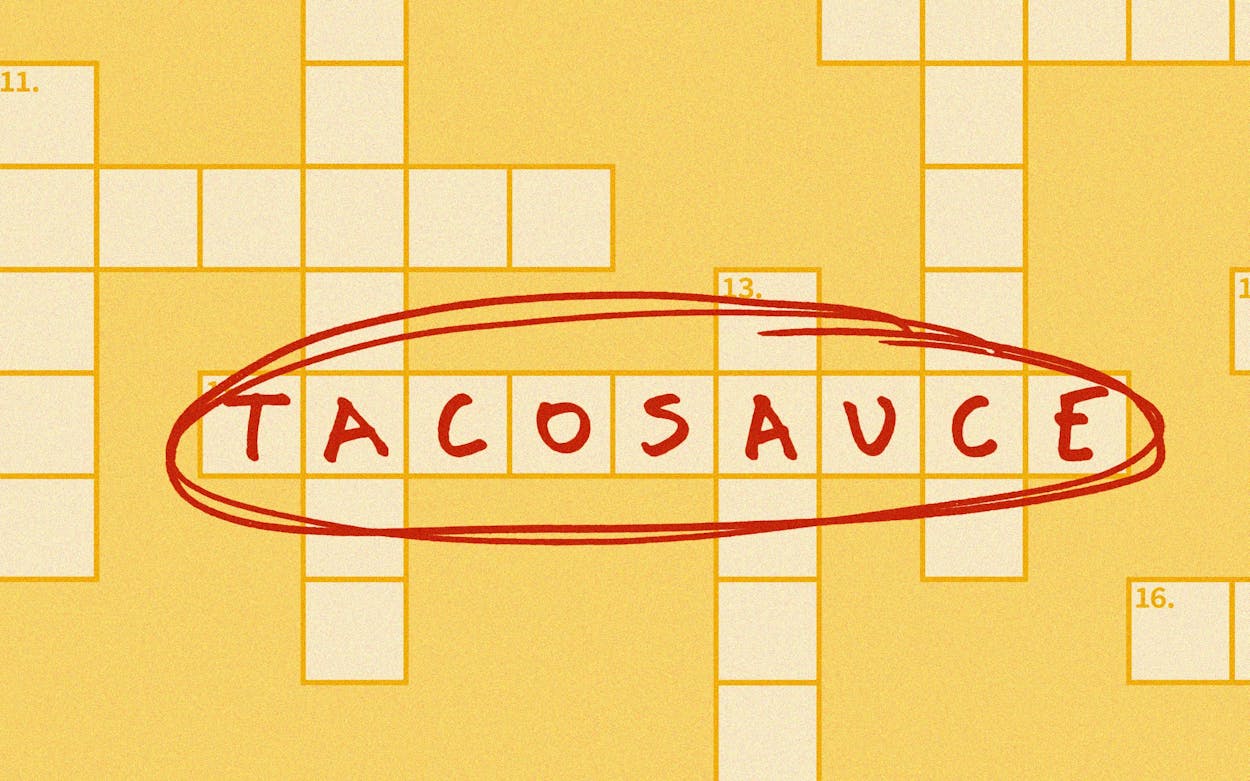I was amused to read the Episcopal bishop of the Diocese of Texas Andy Doyle’s edifying tough-love letter to the New York Times for its December 29 crossword, in which the answer to the clue “Tex-Mex condiment” was “taco sauce.” I imagine it takes a lot for a bishop of any religious denomination to take time away from his duties and use official letterhead to publicly address a snafu in the Gray Lady’s iconic puzzle. As Doyle proclaimed, “I raise a loud shout from Texas on behalf of our people and from whence the term Tex-Mex finds its locus.” I applaud his effort, but I think he’s being overzealous.
It’s true, as Doyle notes, that our beloved regional cuisine is named after a railroad. It’s also true that the great chronicler of Mexican cuisine, British-born Diana Kennedy, denigrated our endemic foodways and in turn caused Tex-Mex’s profile to skyrocket.
Restaurants such as the Original Ninfa’s on Navigation, established in 1973, alluded to in the bishop’s letter, became all the rage, thanks to tacos al carbon, dusty flour tortillas filled with strips of smoky beef fajita. I forgive Doyle for citing Ninfa’s, but the restaurant is too young to serve as a good example of the foundational importance of Tex-Mex. (Doyle’s office is also in Houston, evidence that Texans are the ultimate homers.)
He should have cited the first Tex-Mex restaurant, the Old Borunda Cafe, opened in 1887 in Marfa. Then he should’ve mentioned El Chico. Adelaida Cuellar opened it as a stand at the Kaufman County Fair in 1926, and eventually moved it into Dallas in 1940, establishing a dynasty that continues with Adelaida’s grandson’s own restaurant, Casa Rosa. El Chico’s success gave John Cuellar, another grandson, the opportunity to acquire a Harvard MBA and return to help run the family business.
Components of Tex-Mex (tamales, enchiladas, chili con carne, chile con queso, tacos, nachos, beef barbacoa, canned ingredients, spice powders, etc.) were born out of Mexican-American innovation and the adaptation of ingredients from other cultures that have long called Texas home. Tex-Mex wouldn’t be the same without the cumin favored by Canary Island immigrants. And let’s not forget San Antonio’s Chili Queens. As Tex-Mex developed, the guisado known as carne con chile in Mexico became chili con carne. Queso fundido became chile con queso. All hail carne guisada.
Doyle’s use of the word “clash” when referring to “Mexican and Texas cuisines” makes me uncomfortable. It reminds me of the sometimes brutal events that shaped today’s Texas and its dishes. Yet Doyle is not wrong. Violence is significant in the development of Tex-Mex, which was codified in the wake of political and civic upheaval that created the modern borderlands and issues like the criminalization of Latin Americans attempting to cross the Rio Grande.
But the part that I most disagree with is Doyle’s central point: there is no room for taco sauce on the Tex-Mex table. His writing suggests taco sauce is the stuff from Taco Bell and other fast-food chains whose packets are best tossed into the kitchen junk drawer. Doyle argues that the condiment belongs to Cal-Mex, a category whose definition is debated by journalists and scholars across the continent. But taco sauce is also favored in the Midwest, where viscous liquid contained in the Heinz packets is served alongside the crispy tacos at the Moonlighter in Chicago, and a ketchup-like topping is sold by the Kansas City–area Spanish Gardens, a food producer founded as a Mexican restaurant in 1968. Taco sauce is to the Midwest what salsa roja is to Texas.
Here’s the thing: It doesn’t really matter. Most Americans think of taco sauce as a part of Tex-Mex cuisine. Even if that’s easily debatable and not something I’m fond of, it’s already adopted into the culture, so why bug the editors of the crossword puzzle? Doyle’s nit is just too small—and too late—to pick. Maybe he’ll have better luck arguing his point at the post–church service social hall gathering.








